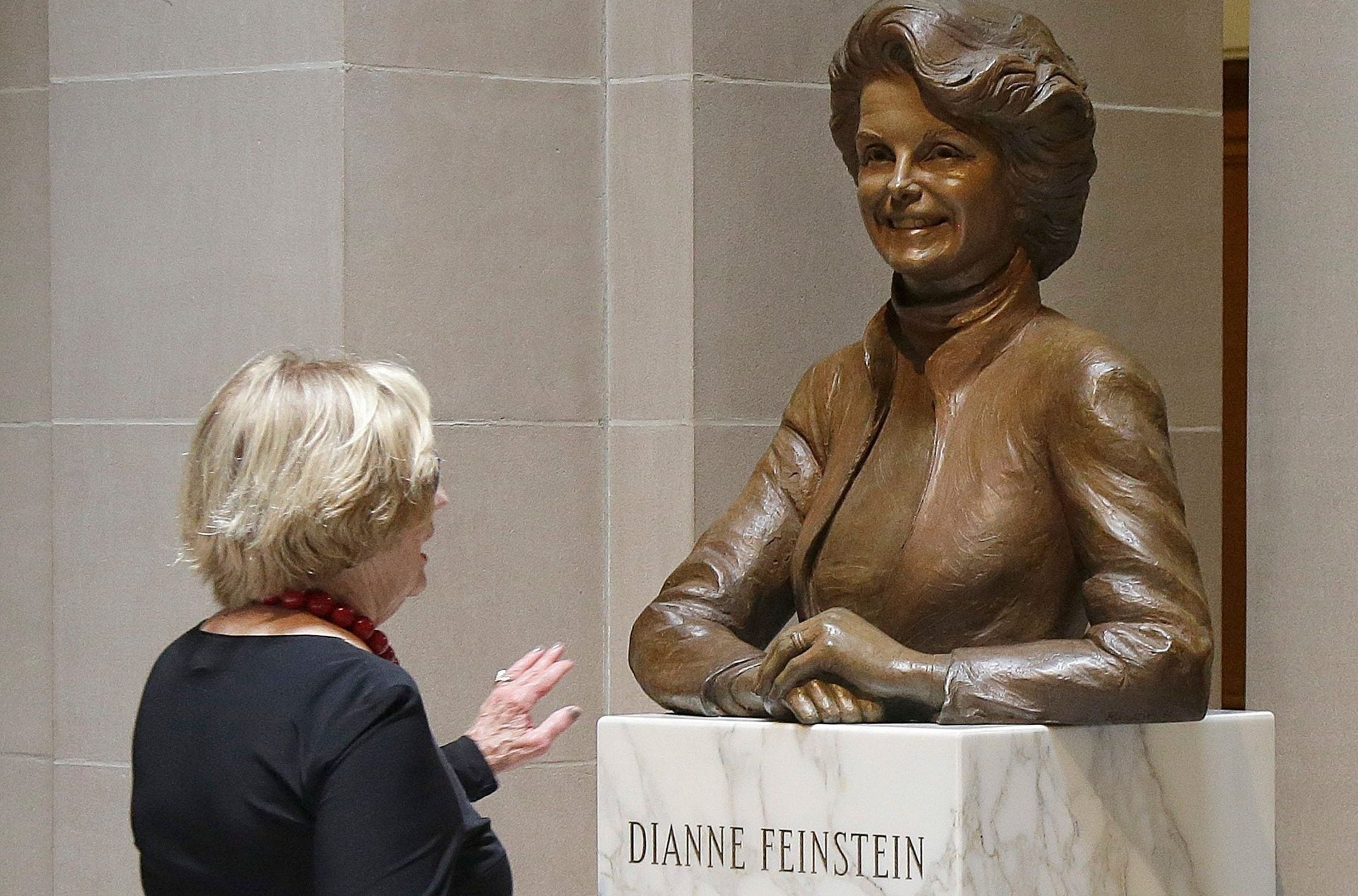San Francisco doesn’t just need more women in its public art—it needs more female artists
Of the dozens of statues in San Francisco honoring historical figures, only three depict women. A new city ordinance aims to change that—but it can only go so far in addressing the broader problem of representation.


Of the dozens of statues in San Francisco honoring historical figures, only three depict women. A new city ordinance aims to change that—but it can only go so far in addressing the broader problem of representation.
At the moment, the only women commemorated in the city’s statues are nurse Florence Nightingale; artist Georgia O’Keeffe; and former San Francisco mayor and current US senator Dianne Feinstein. That’s alongside many statues of famous men scattered all over the city, including Abraham Lincoln, Ludwig van Beethoven, Thomas Starr King, and a great variety of explorers and seafarers.
Now, San Francisco’s board of supervisors has voted to require that women be depicted in at least 30% of city-sponsored public monuments. Names of streets, parks, buildings and building rooms, and on plaques will also be subject to the law.
It’s designed to improve representation of women “in public places,” supervisor Catherine Stefani said. “The accomplishments of great women deserve to be recognized alongside the accomplishments of great men.” In time, she said, she hoped that half of all monuments would recognize women and their achievements.
But this legislation will do little to help a related issue. Of 358 public artworks in San Francisco listed in the Smithsonian’s online catalog, just 15% were by female artists. It’s a problem common throughout the Bay Area. Nina Wright, an artist based in nearby Oakland, noticed a similar trend after she was asked to compile a list of murals painted by female artists in the downtown area. “There are hundreds of murals in this area and I could only find 20 done by females, which is just ridiculous,” she said. The discovery inspired her to launch Graffiti Camp for Girls last year, a workshop that encourages young women to embrace the medium.
The underrepresentation of women in the art world isn’t limited to public art. It’s there in the upper echelons of auction sales as well as in publicly funded galleries. Between 2007 and 2015, only 29% of the solo exhibitions in New York’s Whitney Museum were dedicated to women artists. Meanwhile, of the present or forthcoming exhibitions at the city’s Museum of Modern Art, only one focuses on a female artist, compared to six on men. Representation is an issue in administration, too: in 2013, women held only 24% of the museum director positions at institutions with budgets over $15 million. (They were paid about 30% less to do it, too.)
If Stefani and the other representatives on the board of supervisors are interested in recognizing the accomplishments of great women, they may want to consider what they can do to help facilitate more of them—including setting goals to feature more art by women. The city’s next planned monument, announced at the same time as the law, will be of the artist and writer Maya Angelou, as “an ever-present role model and inspiration to girls and young women.” They’ve earmarked $180,000 for the artist’s contract, but haven’t yet decided who that artist will be.
But what could be more inspirational than having the sculptures that recognize women’s achievements simultaneously being an opportunity for women to achieve? In the art world and elsewhere, gender equality isn’t just about what’s being represented, but about who gets to control that representation.